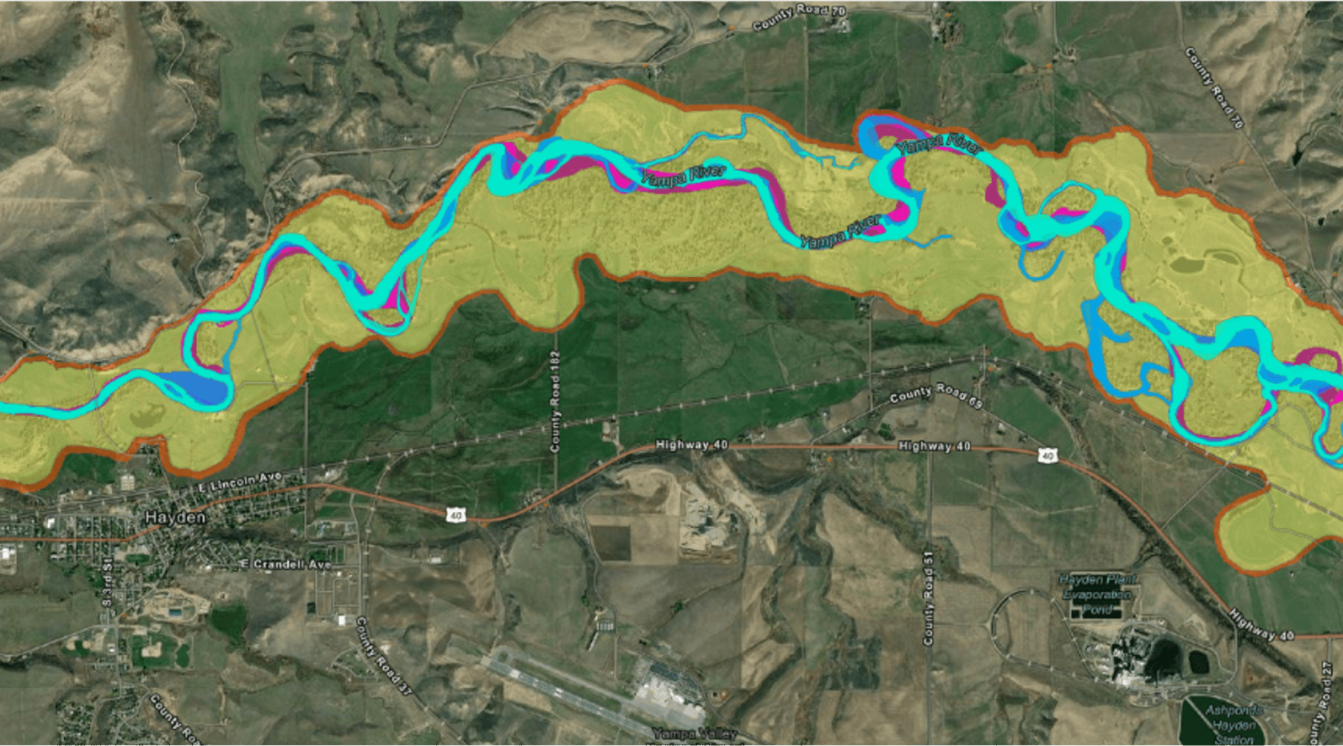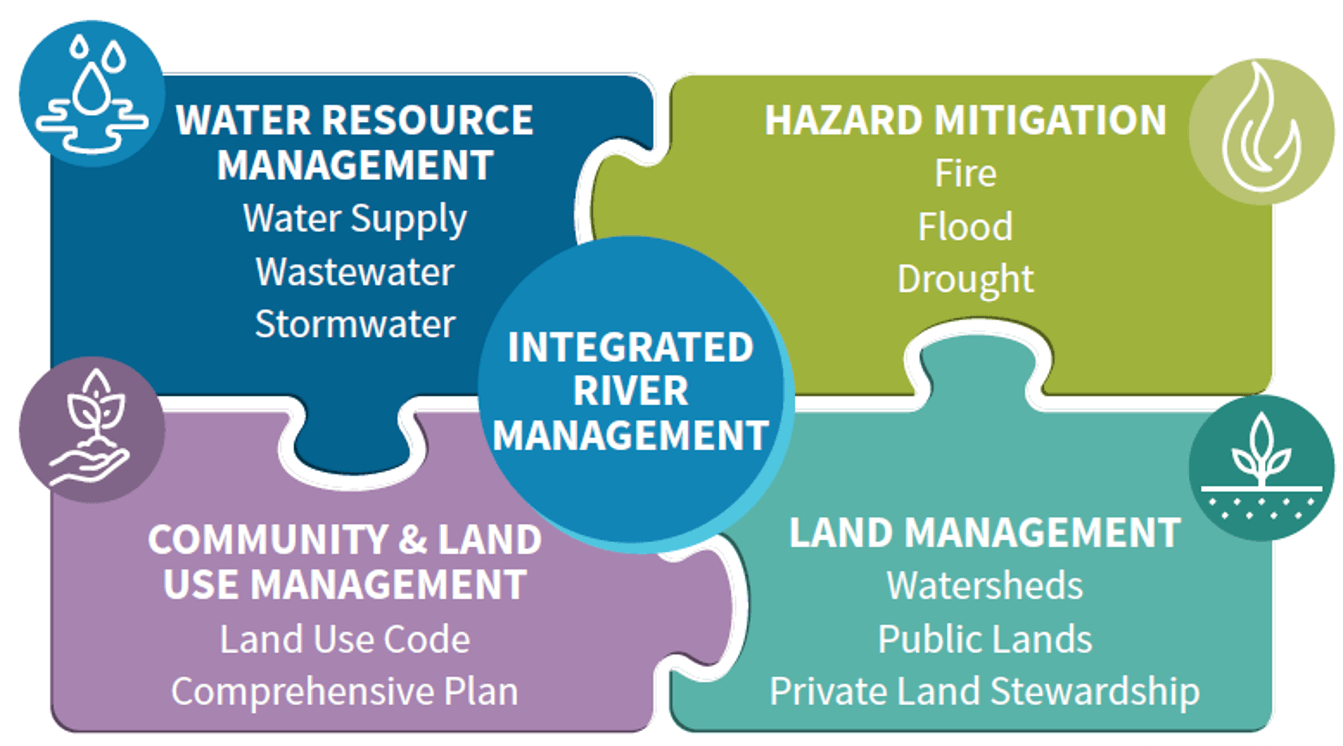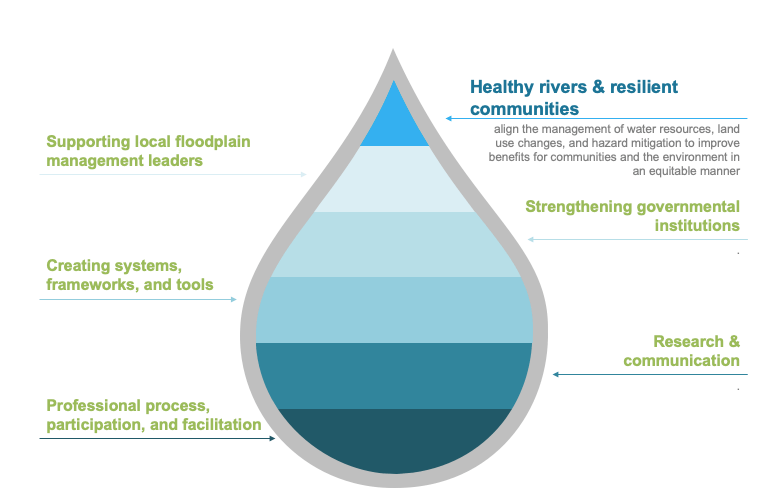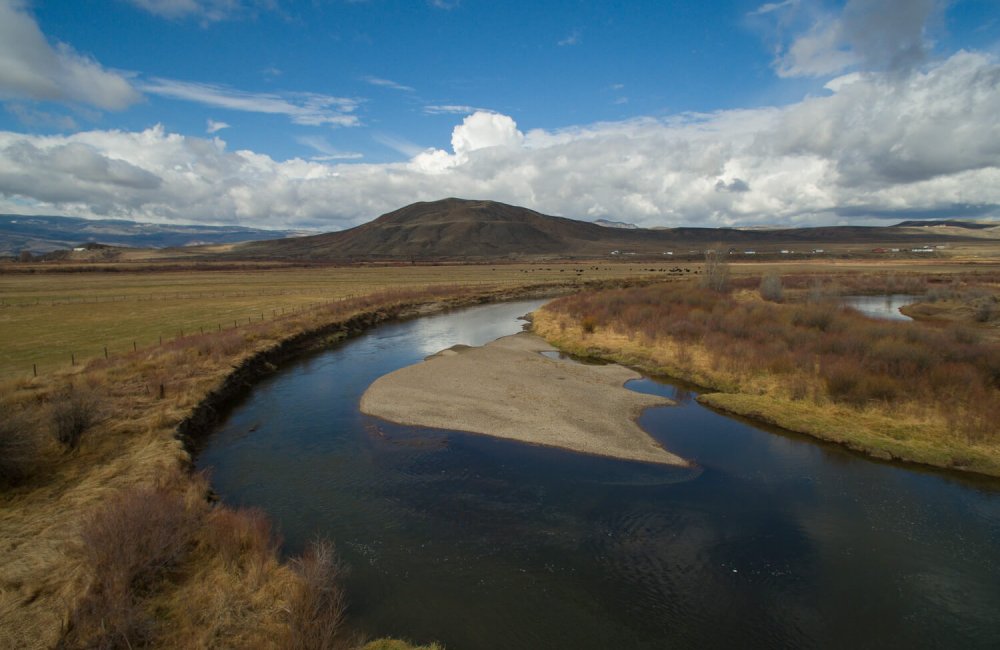Integrated River Management and River Smart Communities

Connecting Land and Water for Healthy Communities
Across the West, we are seeing more and more communities struggling to respond to reduced amounts of water in their rivers, more frequent forest fires, and increased risks of floods. Climate change is exacerbating those hazards, driving a decline in watershed and river health, leaving many rivers and streams on the brink of collapse. We urgently need to do more to ensure our communities and watersheds are resilient, now and into the future.
River Smart: What and Why?
River Network is proposing to meet this significant challenge with a new program, River Smart Communities, to support local leaders working to ensure their communities and rivers are healthy and resilient into the future.
“Room for the River” Movement

To maintain a healthy, functioning river requires managing the entire river corridor—the river channel, all of the floodplain, the riparian areas and wetlands, and the connected aquifer—as a single interdependent system. Rather than trying to change the way the river behaves, IRM acknowledges that river systems are dynamic and require space within the river corridor for the natural processes including high and low flows, flood water storage in adjacent floodplains, and sediment deposition and transport. There are many names emerging for this new paradigm—nature based solutions, integrated river basin management, integrated floodplain management, and more—but the underlying tenet is the same. Rivers need adequate space for the natural processes that create the multiple benefits our communities, economies, and the environment rely upon to be healthy and resilient.
River Smart Vision

River Network is developing River Smart resources for Colorado communities that establishes best practices for evaluating fluvial hazards, locating and managing infrastructure, riparian land management, state and county policies, and other elements of community management of riverscapes to reduce impact and foster resiliency of riverside lands and river health. Our vision accelerates the adoption of integrated river(scape) management (IRM) across the Colorado River Basin, focusing on opportunities for strengthening implementation within four interdependent sectors of emergency management and hazard mitigation planning, community and land use planning, land management, and water resources management.
River Smart Strategies

River Smart Outcomes
River Network imagines “River Smart Communities” across the Colorado River Basin that will have:
- Community leaders working collaboratively to champion IRM as an important strategy for community and river resilience.
- Incorporated the concept of “giving rivers room” during water, land use, and hazard planning.
- Adopted local government policies for the river corridor that result in measurable river health outcomes and reduced risks to people.
- Implemented multi-purpose projects in the river corridor that protect, preserve, and restore floodplains.
Pilot Projects
We currently have identified three pilot communities, with projects that focus on land use codes, fluvial hazard zones, river health assessments, working lands, project identification, and partnership building:
- Yampa River Collaborative and Routt County: River Network is supporting implementation of the Yampa River Integrated Water Management Plan that includes river health assessments and applying fluvial hazard zone delineations. We are also providing technical assistance to the Routt County floodplain manager and planning staff on land use code updates related to waterbody setbacks.

- Upper Arkansas Watershed Partnership (UAWP): River Network is collaboratively developing an integrated watershed plan that UAWP can use for “strategic doing” for river resiliency, providing technical assistance and other support related to project identification and prioritization, and supporting funding opportunities to launch other river-based countywide initiatives.
- RiversEdge West and the Grand Valley: River Network is assisting with the river corridor initiative through the 15-mile reach of the Colorado River, conducting an interactive stakeholder analysis that will result in a description of relationships between flows and attributes of value, and supporting discussions with agricultural producers regarding water use and land use within the Grand Valley.
Takeaways
Want to learn more and join this work? Reach out to Brian Murphy, Healthy Rivers Program Manager and read our River Smart Communities summary.




